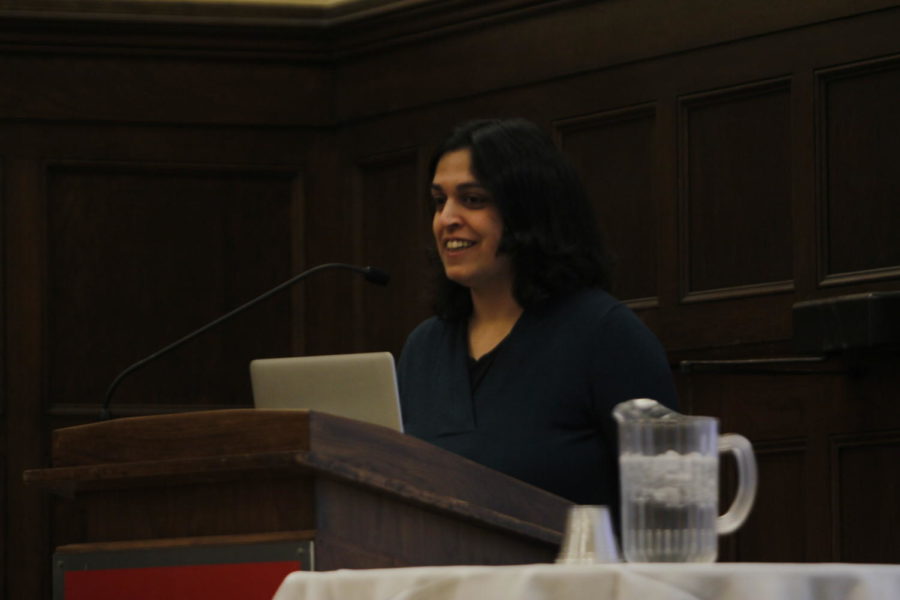Assistant professor of biochemistry discusses rewriting DNA
Iowa State assistant professor of biochemistry Dipali Sashital speaks to the audience during her lecture on CRISPR technology on Nov. 29 at the Iowa State Memorial Union.
November 29, 2018
Dipali Sashita, assistant professor of biochemistry at Iowa State, discussed genome editing and the new CRISPR technology in her lecture: “Rewriting DNA: Genome editing in the CRISPR era” on Thursday night.
CRISPR, which is short for CRISPR-Cas9, is a relatively new technology that can alter DNA through gene editing. Sashita is an expert in this new technology, and her lab is continuing to learn and develop this new tool for gene modification.
“Genome editing has revolutionized our ability to do biomedical research,” Sashita said. “It allows us to study genes that were previously not very easy to study in organisms and cells.”
A gene is a sequence within a genome that encodes for a molecule to do an important function in the cell. There are multiple variations of codes in our DNA, and they are unique to each person. However, sometimes those code variations can cause diseases.
“We want to take the cells of a patient, change the DNA, and then introduce those cells back into the patient,” Sashita said. “This is one example of a way that we could use genome editing.”
Cas9, or the molecular scissors, is a protein that cuts the DNA in a very selective manner and is dictated by RNA, which Sashita calls a sister molecule to DNA. It works by having the RNA molecule guide the Cas9 protein through the cells to find the specific DNA sequence to cut. After the sequence is cut, the repair will occur and the change will happen.
Sashita emphasizes that CRISPR is not magic. Scientists are still working on things such as safety, efficacy and editing outcomes. They are still trying to figure out what genes to edit as well as how to deliver the therapy.
Genome editing and basic research is not the only thing that CRISPR is used for, it works in all different kinds of life, like plants and animals. Agriculture is another major place that CRISPR is being used. It is used for both production to ease harvest and improve yield and for consumers, to reduce browning and get more nutritional value.
There are currently some clinical trials going on using CRISPR to correct various types of diseases. A lot of companies are investing in this technology to find cures for these diseases. However, a lot of this work is still just in the beginning phases.
















